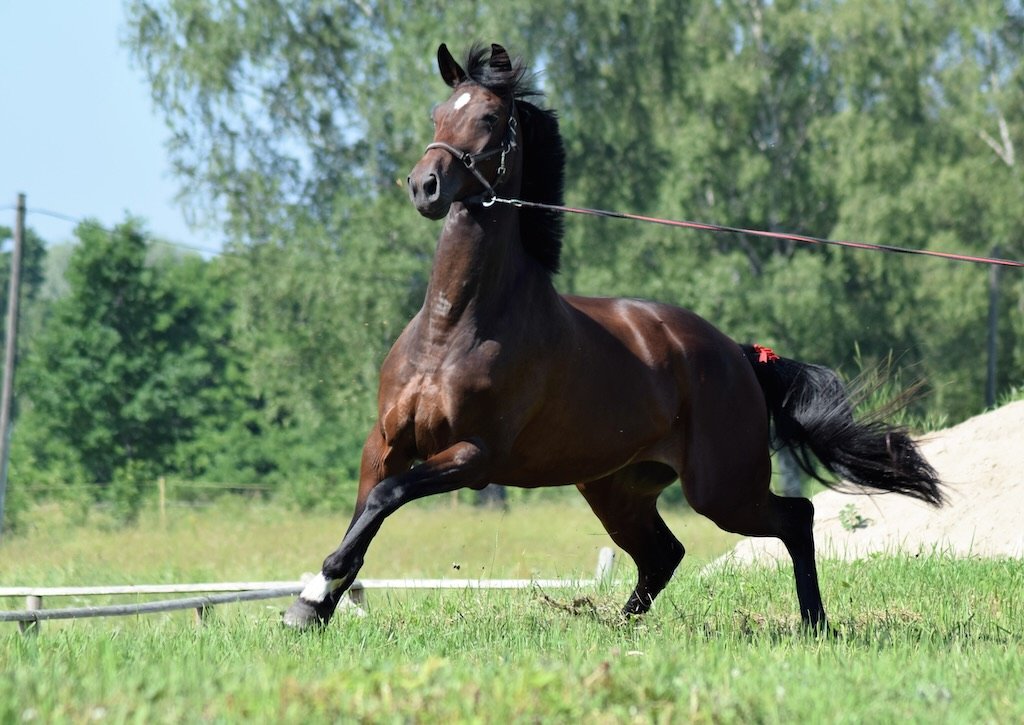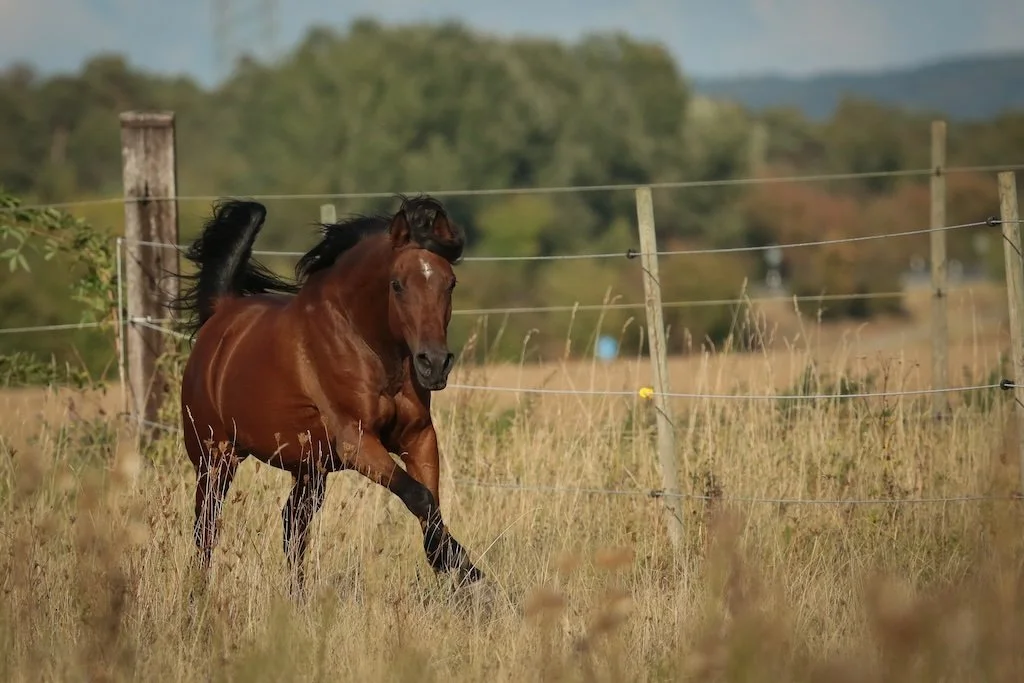Moving on circles is hard work
Because lunging is such a common practice, we often forget how difficult moving on circles is for horses. We need to be aware of this is we want to make sure to teach our horses how to handle the challenge of moving on a bend.
Moving on a circle is hard work, which is why a lot of horses develop habits of crooked movement on the bend.
The practice of lunging horses is one of the first skills we learn as horse people. Whoever came up with the idea to work the horse around him in all three gaits while he stands (relatively) still, is a genius. Working the horse on the circle not only enables you to strengthen him and develop stamina, it also gives you a chance to look at his movement closely and suggest changes in his posture without him having to carry a rider. That said, because lunging is such a common practice, we sometimes forget that moving on a circle is actually really difficult for the horse.
Horses are made for moving in straight lines, using their strength and speed to run away from predators in the open grasslands. The many energy saving mechanisms of their bodies enable them to do that really, really well. One of those mechanisms is a relatively rigid spine, which enables them to transfer the energy from their powerful hind legs to the front end of the body, without much of the energy being lost in stabilizing the individual vertebrae. Because of this, bending their bodies to accommodate the curve of a circle, isn't the easiest thing to do, especially when the circle becomes smaller.
Horses are made to move in straight lines.
Any body that's moving on a circle is subject to centrifugal force that acts on the body awa from the axis of rotation. In simple terms it pushes the body towards the outside. Think of being in the back seat of the car. When the car goes around a turn, you will feel your body being pulled towards the car door. The faster the speed, the stronger you will feel this pull. At low speeds, it won't take much to resist this force, maybe just a slight adjustment in the muscle tone. At faster speeds, you will need to use your muscles more to preventing your body from being smashed into the car door. When the driver goes really crazy, you might need to reach out with your arm to stabilize yourself against the side of the car. The same goes for a horse moving on a circle. As long as he is moving slow, maintaining balance is not a big deal. The faster he goes, the more difficult it becomes to do this. This is why horses will often start to go faster and faster on a lunge line once they start running – it's because they're trying desperately not to fall.
Horses soon learn that running faster is not the best way to deal with circles, so they adapt a different strategy. Not all horses do this, but it's very common. They lean on their inner front leg and throw their hind end outside of the circle (similar to you stabilizing your body with your outstretched arm in the car situation). In some cases, their head will bend slightly (or not so slightly) to the outside. In this way they can deal with the demands of the circle, but now their body is crooked and the forces acting on the joints are uneven. In the long run, this is a bad idea. It will cause them to unevenly develop their muscles and develop compensation patterns in their bodies. And now we put a rider on top and ask them to be straight. Of course, this is going to be a challenge. This is why taking the time to teach a horse how to correctly manage moving on a circle is a much better idea that having to correct bad movement patterns later on. Next week we will look at how the horse can use his body on a circle to not only maintain balance correctly, but evenly develop muscles, stamina and coordination.
Associated content:

